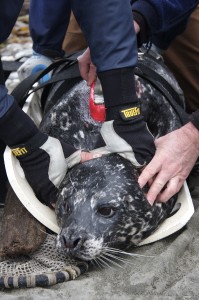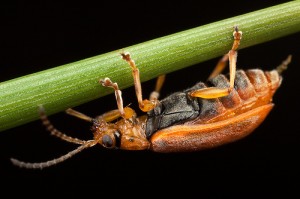“One of the predators missing from the documented literature is the harbour seal”, says Austen Thomas, a PhD candidate at the University of British Columbia.
In 2008, Austen led an exciting research project examining the feeding behaviour of harbour seals in the Strait of Juan de Fuca, off the coast of Washington state. Austen was interested in finding out whether harbour seals have different feeding patterns during the winter spawning season of Pacific herring — a species which comes into close proximity with the seals when they move inshore to lay their eggs. Austen wanted to know whether the seals made use of the increased herring numbers when they occurred conveniently nearby. Surprisingly, he found that the seals did not catch more spawning herring during winter spawning season in general, choosing instead to catch young, small fish. This behaviour allows for the successful laying and hatching of a new generation of herring.
We set out to find out more about how Austen carried out his research; how he used equipment and analysis to track seals and uncover their feeding habits and diet; and what the “bigger picture” implications of his work are. The below video tells the story of Austen’s research.
https://www.youtube.com/watch?v=zpX8-FlfFvU
As mentioned in the video, Austen used Global Positioning Systems (GPS) and time depth recorders (TDR) to understand where and when harbour seals most frequently feed. Both the GPS and TDR use satellites to pinpoint the seals location and monitor their diving behaviour at their feeding grounds. While the GPS revealed movement of the seals around their home, Protection Island, the TDR showed the diving depth patterns of seals. The tracking devices showed Austen how the seals movements matched up with the movement of the Pacific herring population.
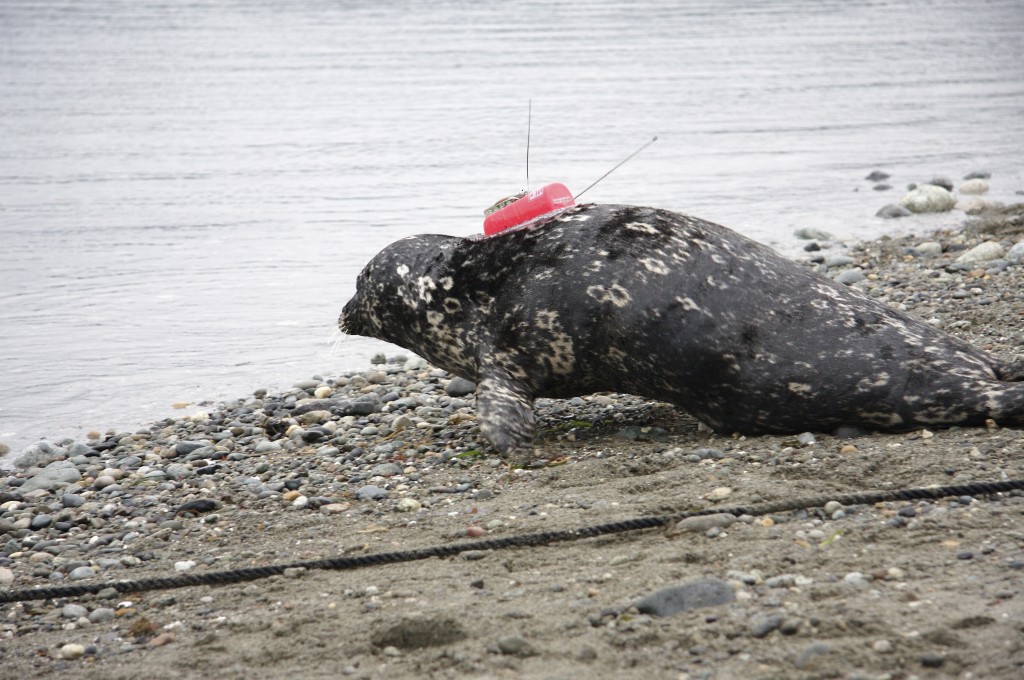
A seal makes a break for home after getting outfitted with the tracking devices. The devices are designed to come off when the seal molts. Whether they floated as planned is another story. Austen Thomas photo.
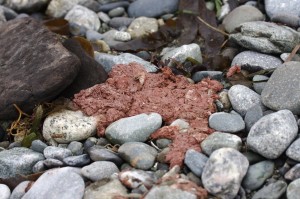
seal scat. Austen Thomas photo.
In addition to tracking seal movement through space and time, Austen also collected and analyzed harbour seal feces, or scats. This portion of his research allowed him to identify the species and age of fish consumed.
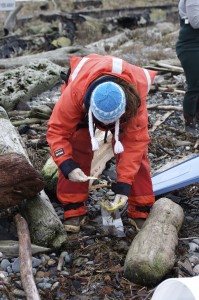
Collecting seal scat for diet analysis. Austen Thomas photo.
Scat analysis was done by examining the bone remains under a microscope. Specifically, looking at the otoliths (the inner ear bone of the fish) that remained in seal fecal samples enabled Austen to identify age, size, and species of the fish consumed. This research revealed how much of different-aged Pacific herring was being eaten during different times of the year.
Besides learning about Austen’s research, we wanted to find out about the broader impacts of his work. For example, his work has potential implications for both local fisheries and the Species at Risk Act (SARA), which is used to guide resource management efforts. In the following podcast, we discuss the “bigger picture” context that Austen’s research fits into.
Audio clip: Adobe Flash Player (version 9 or above) is required to play this audio clip. Download the latest version here. You also need to have JavaScript enabled in your browser.
Austen’s research sheds light on unexpected feeding behaviour of the seals residing on Washington’s Protection Island. These findings are not only interesting; we will likely see that Austen’s discovery of surprising seal feeding patterns contributes to shaking up common understanding of this marine ecosystem.
-This multimedia project was a Group A production.

